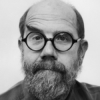Chuck Close

Chuck Close
Charles Thomas "Chuck" Closeis an American painter/artist and photographer who achieved fame as a photorealist, through his massive-scale portraits. Close often paints abstract portraits, that are shown in the world's finest galleries. Although a catastrophic spinal artery collapse in 1988 left him severely paralyzed, he has continued to paint and produce work that remains sought after by museums and collectors. Close lives and works in Bridgehampton, New York and Long Beach, NY and New York City's East Village. His first...
NationalityAmerican
ProfessionPhotographer
Date of Birth5 July 1940
CityMonroe, WA
CountryUnited States of America
What difference does it make whether you're looking at a photograph or looking at a still life in front of you? You still have to look.
Losing my father at a tender age was extremely important in being able to accept what happened to me later when I became a quadriplegic.
I think I was driven to paint portraits to commit images of friends and family to memory. I have face blindness, and once a face is flattened out, I can remember it better.
From my point of view, photography never got any better than it was in 1840.
In my art, I deconstruct and then I reconstruct, so visual perception is one of my primary interests.
Neurologically, I'm a quadriplegic, so virtually everything about my work has been driven by my learning disabilities, which are quite severe, and my lack of facial recognition, which I'm sure is what drove me to paint portraits in the first place.
I have always attempted to create images that deliver the maximum amount of information about the subject.
I wanted to translate from one flat surface to another.In fact, my learning disabilities controlled a lot of things. I don't recognize faces, so I'm sure it's what drove me to portraits in the first place.
Inspiration is for amateurs - the rest of us just show up and get to work. And the belief that things will grow out of the activity itself and that you will - through work - bump into other possibilities and kick open other doors that you would never have dreamt of if you were just sitting around looking for a great ‘art idea.’
Part of the joy of looking at art is getting in sync in some ways with the decision-making process that the artist used and the record that's embedded in the work.
Painting is the most magical of mediums. The transcendence is truly amazing to me every time I go to a museum and I see how somebody figured another way to rub colored dirt on a flat surface and make space where there is no space or make you think of a life experience.
It doesn't upset artists to find out that artists used lenses or mirrors or other aids, but it certainly does upset the art historians.
It always amazes me that just when I think there's nothing left to do in photography and that all permutations and possibilities have been exhausted, someone comes along and puts the medium to new use, and makes it his or her own, yanks it out of this kind of amateur status, and makes it as profound and as moving and as formally interesting as any other medium.
Sculpture occupies real space like we do... you walk around it and relate to it almost as another person or another object.